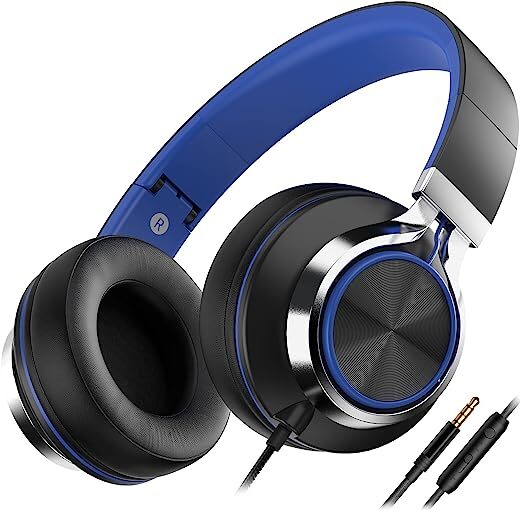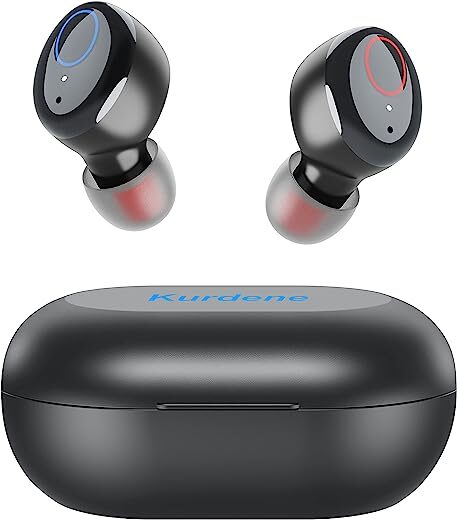
Original price was: £132.00.£107.62Current price is: £107.62.
ASUS Strix SOAR Card Price comparison
ASUS Strix SOAR Card Price History
ASUS Strix SOAR Card Description
Experience Immersive Sound with the ASUS Strix SOAR Card
Enhance your audio experience with the ASUS Strix SOAR Card. This high-performance sound card is designed to deliver exceptional audio quality, making it the perfect addition to any gaming or multimedia setup. With its 116 dB signal-to-noise ratio and advanced surround sound configurations, you can immerse yourself in your favorite games, movies, and music like never before. Let’s explore the features and benefits that make the ASUS Strix SOAR a must-have for audio enthusiasts.
Key Features of the ASUS Strix SOAR Card
- Exceptional Audio Quality: With a maximum sample rate of 192 KHz and a signal-to-noise ratio of 116 dB, the ASUS Strix SOAR ensures crystal-clear audio reproduction.
- 7.1 Surround Sound Configuration: Get lost in your games with this sound card’s 7.1 surround sound capability, providing an incredibly immersive gaming experience.
- Customizable Sound Profiles: Tailor your sound experience with customizable profiles, allowing you to switch between settings for different gaming or music genres.
- Compact Design: Weighing just 1.3 pounds and sized at 17.4 x 12.3 x 9.6 inches, the ASUS Strix SOAR fits seamlessly into any setup, without taking up excessive space.
- Durable Build: Manufactured by ASUS, this sound card is built to last, ensuring you enjoy high-quality sound for years to come.
Price Comparison Across Various Suppliers
The price of the ASUS Strix SOAR Card varies across different suppliers. By comparing prices, you can ensure you get the best deal possible. On our price comparison platform, the ASUS Strix SOAR is available at competitive rates from multiple retailers, making it easy to find the best price that fits your budget.
6-Month Price History Trends
Our detailed 6-month price history chart reveals interesting trends for the ASUS Strix SOAR. Over the past few months, prices have fluctuated, with peak prices during holiday sales. However, the average price has remained stable, making this an ideal time to purchase if you’ve been considering upgrading your audio setup.
Customer Reviews: What Users Are Saying
The ASUS Strix SOAR Card has received positive feedback from customers who appreciate its rich sound quality and realistic audio effects. Users highlight the benefits of the surround sound feature, which greatly enhances gaming experiences. Many customers have noted:
- “The audio clarity is unmatched; I can hear details in games I never noticed before.”
- “Easy to install and set up. My gaming experience has dramatically improved!”
However, some reviews mention minor drawbacks, such as initial driver installation difficulties. Despite these issues, most customers believe the sound card’s performance outweighs the initial hiccups.
Unboxing and Review Videos
For those interested in seeing the ASUS Strix SOAR Card in action, various unboxing and review videos are available on YouTube. These videos provide a closer look at the product and showcase its features and installation process. Users have praised these videos for helping them visualize the product before making a purchase decision.
Why Choose the ASUS Strix SOAR Card?
The ASUS Strix SOAR Card stands out in a crowded market due to its combination of outstanding audio performance and user-friendly features. Whether you’re a gamer seeking the ultimate audio experience or a music lover wanting clear sound, this card delivers. The well-built design ensures durability, while the surround sound capabilities bring a theater-like experience to your home. Plus, with a reasonable price point, anyone can enjoy high-end audio quality without breaking the bank.
For those looking specifically for the ASUS Strix SOAR Card price and ASUS Strix SOAR Card reviews, our platform provides comprehensive options. You can easily compare prices and get insights from multiple reviews, ensuring you make an informed decision.
Don’t Miss Out!
Upgrade your audio experience with the ASUS Strix SOAR Card. With its impressive features, competitive pricing, and strong customer feedback, it’s a top choice for anyone serious about sound quality. Compare prices now!
ASUS Strix SOAR Card Specification
Specification: ASUS Strix SOAR Card
|
ASUS Strix SOAR Card Reviews (8)
8 reviews for ASUS Strix SOAR Card
Only logged in customers who have purchased this product may leave a review.












Gary Key –
didn’t work two techs tried, ended up uninstalling.
Bob Thomson –
Bit of a problem sourcing 6 pin power cable, but other than that it works great. Would not believe mp3 could sound so good. Great product
Anon –
As of 10/17/23 the drivers work perfectly fine on my Windows 11 PC. My initial sound card was an ASUS AE with an opa2134 opamp. It sounded good, but left more to be desired. I found this Asus Strix Sour at a discounted used price and have not regretted it. Even leaving the factory opamp in, the soundstage is clear, base punchy, and not muddy. In games the difference is even better. I can hear foot steps much more clearly and when glass breaks I can hear the shards hitting the ground. On a final note, this is a fantastic card to blast Queen on.
Jay –
I’m a computer geek and love trying new gadgets, so when I saw the Strix Soar finally available on Amazon I decided to take a leap into the unknown. I chose the cheapest variant of the three cards since I didn’t want to risk wasting a large sum and not getting any results. If I lose, I wouldn’t be losing too much.
I am happy to report that this card has exceeded all my expectations, especially considering the fact that I’m coming from Essence STX II card with three Muses 01 Op Amps. For those of you unfamiliar with the jibberish I just mentioned, that’s the top audiophile card from ASUS with Japanese Operation Amplifiers from New Japan Radio. Each little amplifier costs you a whopping $50 USD, on top of the $240+ sound card.
So how does this $99 card fare against its upgraded $400+ cousin? It actually doesn’t sound all that different and even manage to beat the Essence in some areas!
The first thing that came to my mind was how beautiful and intuitive the software is. The interface presents you with all the available options in a single page. Everything is nicely laid out and customizing the card to your liking is a breeze. This contrasts very much with ASUS’ older software featuring bland/stale looks and spartan feature sets. Creative also lose out as their software is full of fluff and useless options.
I’m not going to discuss the gamer-oriented features as I don’t play much FPS to make any use of them. While I haven’t tested the positional performance in FPS titles, I can tell you that the stereo separation of the card is phenomenal from playing some MMOs and listening to music. You can clearly hear the direction/position the sound is coming from, whether it be environmental noise or another player’s footsteps. For those of you wondering what speakers I’m using – I’m sporting a pair of JBL LSR 305 studio monitors.
Now on to the most important thing: sound quality. I buy sound cards to listen to music primarily and will judge them based on this criteria most heavily. While I can’t attest to the accuracy of the sound coming out of this card without a live source for comparison, I can say for sure that the sound quality won’t disappoint.
The sound card features a somewhat V shaped sound signature, with a bit more emphasis towards highs and lows. I think ASUS did a great job with this as the mids don’t feel recessed at all. The sound signature is very lively and “fun” without getting tiresome. If you’re upgrading from motherboard audio, you’re going to hear details you’ve never heard before provided you have a decent set of speakers at your disposal.
Compared to my Essence STX II, John Powell & Gavin Greenaway’s “Coming Back Around” from How to Train Your Dragon sounded much more exciting and engaging, with slightly more artificial highs and fuller lows in comparison. While you do lose a small bit of detail and realism, the trade-off is in my opinion is well worth it given the price difference.
Some of you might wonder if Soundblaster Z could do the same since it’s in the same price range. I’m going to tell you no… This card curbstomps SBZ… SBZ hisses and sounds metallic at highs, it’s booming and unnatural at lows, the “crystallizer” in my opinion should be named “music/ear killer”. Just get this card instead and thank me later.
Anyways, to sum things up – I am flabbergasted by the price/performance ratio of this sound card and feel a bit upset even as I write this message. While the Essence STX II sounded pretty damn good and in some cases more natural compared to the Strix, at 1/4 the cost the Strix’s got about 90% of the performance of the upgraded STX II while packing significantly more features. I’m not going to pull out the Muses Amps… I don’t want to compare stock STX II to this card. I basically paid a 300% difference in price and received 10% back in performance… ASUS – if you guys are reading this – you’re welcome to update the software on STX II… Give me something prettier to look at at least please?
For those of you on a very tight budget – I would recommend you spend your money on better speakers first. That would affect your sound much more than any sound card would. After that, get this card. I don’t think anything can touch it at its price range as of today.
Holger Hahmann –
Sehr starke, preisgünstige Soundkarte.
Der räumliche Eindruck, Ortungsfähigkeit und die generelle Immersion in Spielen wie CS GO sind sehr gut.
Absolut empfehlenswert und allen Onboard- und sonstigen Soundlösungen (Realtek- Chips, Soundblaster Audigy und X- Fi) die ich bisher nutzte haushoch überlegen!
Software bietet gewisse Möglichkeiten, auch zum Hardwarecheaten (Pfeilangabe per eingeblendetem Display aus welcher Richtung ein Sound kommt), ist jedoch nicht völlig ausgereift..verbesserungsbedürftig.
Auch zum Musikhören geeignet!
Alles in allem eine sehr runde Sache!
Fazit: Absolut empfehlenswerte Sound- Karte des mittleren Preissegments, insbesondere für PC- Gamer!
Prädikat: “Gut” bis “Sehr gut”
Matthew Tan –
Good card at a good price.
Tristan P. –
Pros:
– Sound quality and noise floor is better than my on-board audio. (Realtek ALC887 w/ Crystal Sound 2)
– Has better sound-stage than my Fiio E10K
– Amplifier drives my K612 Pro headphones with absolutely no problems
– Has enough ports for both headphones and 7.1 speakers to be plugged in at the same time
– Bundled software (Sonic Studio) is simple and intuitive
– Comes with a shroud for good looks and handling protection
– Includes ASIO 2.0 drivers and is essentially plug-n-play with all the major DAWs.
– Works just fine with Windows 10 which is something that cannot be said about a lot of sound cards.
Cons:
– Requires a 6-pin power cable (I assume they did this to help reduce EMI, but make sure your power supply can accommodate this.)
– No front panel headers
– Sonic Studio causes Flash Player to crash intermittently while using Firefox. (This issue has been fixed, look below for my update.)
– Similar to its rival, the Sound Blaster Z, there is an LED on the card that you cannot turn off. It’s not crazy bright, but it may clash with your color scheme.
– The card itself makes a loud “click” when you switch outputs or boot up your computer. Your speakers will make a loud “thunk” sound if the power is cut unexpectedly like during a hard reset.
– Appears to cause random crashes in Studio One (It took me a while to figure this one out. I assumed it had to be something else because it uses ASIO drivers, but trial and error proved me wrong.)
Other Thoughts:
– It’s not obvious at first, but when you first launch Sonic Studio you’ll need to right click on the headphones icon and select your headphone impedance in order to increase the amplification. Anyone who claims that the amplifier isn’t powerful enough clearly has not discovered this feature yet.
– There are really only three PCIe sound cards on the market right now that are priced around $100: The ASUS Strix Soar, Creative Sound Blaster Z, and HT Omega Fenix. Each has its own strengths and weaknesses.
A quick comparison of features:
(From left to right: ASUS Soar, Creative Sound Blaster Z, HT Omega Fenix)
– Amplifier Power ——————— 600Ohms*— 600Ohms*— 600Ohms*
– Signal to Noise Ratio ————- 116dB — 116dB — Not Listed**
– Channels ——————————- 7.1 — 5.1 — 7.1
– ASIO 2.0 Drivers ——————— Yes — Yes — No
– TOSLink Output ———————- Yes — Yes — Yes
– TOSLink Input ————————– No — Yes — Yes
– Front Panel Header —————— No — Yes — Yes
*Manufacturer claimed headphone driving power. Each of the three cards uses a different model amplifier.
**My findings suggest somewhere around 100-105dB.
10/27/16 Update: I have a Neewer NW-700 Condenser Microphone hooked up to this card via XLR to Phantom Power to 3.5mm. The capture volume must be set to at least 98% to be heard clearly. I have nothing to compare these results to, but I was a bit underwhelmed by the Soar’s inability to produce reasonable gain until it was almost maxed out. There doesn’t appear to be a microphone boost setting in Sonic Studio either.
1/16/2017 Update: I have not experienced any issues with Flash Player for the past couple of months. I think it is safe to say that the problem has been fixed.
2/19/2017 Update: It appears that Studio One does not like this particular card very much. While it was easy to get it connected, I noticed that as time passed, I would get more and more frequent unrecoverable crashes in the software that forced me to hard-reset my computer and load a back-up save of my songs. After chatting with Presonus tech support, I reinstalled the program and tried again… a couple days later the problem came back. The last thing they recommended I do before I closed the tech support ticket was to switch to Windows Audio. Ever since I stopped using the Strix Soar, I have not experienced any more crashes in Studio One. I really didn’t want to give up on this sound card, but random full-system crashes are completely unacceptable.
Benny Ang –
Bought 5 days ago. Tried to register with Asus but out of warranty. Card is in working condition. I hope it lasts!